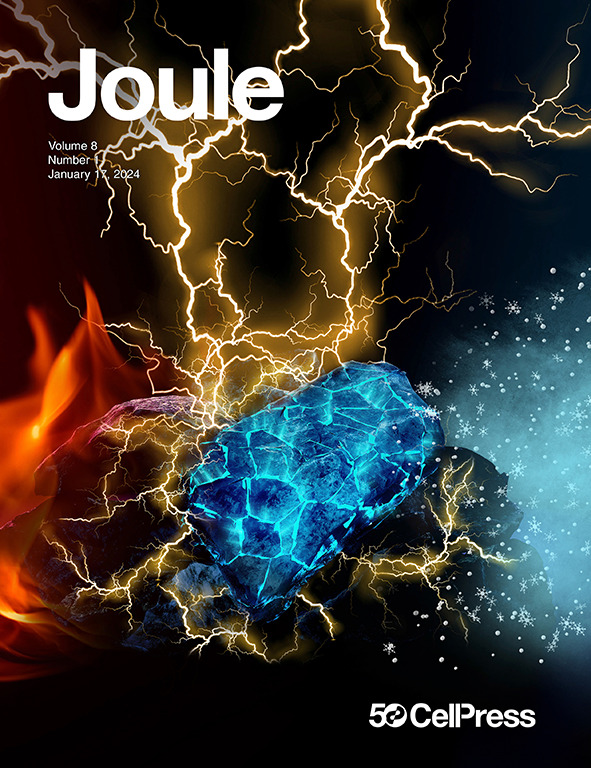Dynamic evolution of cathode-electrolyte interphase in lithium metal batteries with ether electrolytes
IF 38.6
1区 材料科学
Q1 CHEMISTRY, PHYSICAL
引用次数: 0
Abstract
High-voltage lithium (Li) metal batteries (HVLMBs) have attracted tremendous research interest in the past decade owing to their high energy densities. Electrode-electrolyte interphases in HVLMBs play critical roles in dictating their electrochemical performance. However, despite the intensive research on solid-electrolyte interphase (SEI) of Li anode, the cathode-electrolyte interphase (CEI) on high-voltage cathodes remains elusive. Herein, we report the formation and dynamic evolution of CEI on LiNi0.8Mn0.1Co0.1O2 (NMC811) cathodes in ether-based electrolytes. We reveal that the solvent-derived interphase predominates the initial CEI, which subsequently evolves into a Li fluoride (LiF)-rich CEI during cycling. Through solvent design, the weak-solvation electrolyte with branched ether solvents promotes the formation of a conformal CEI layer featuring the monodispersing LiF nanocrystals (∼8 nm), thereby enabling NMC811 cathodes to sustain up to 2,000 cycles. This work addresses the long-standing questions regarding CEI evolution and provides valuable guidance for the rational electrolyte design for HVLMBs.

含醚电解质的锂金属电池阴极-电解质界面的动态演化
高压锂金属电池(hvlmb)由于其高能量密度在过去十年中引起了极大的研究兴趣。电极-电解质界面对hvlmb的电化学性能起着至关重要的作用。然而,尽管人们对锂阳极的固-电解质界面(SEI)进行了深入的研究,但高压阴极上的阴极-电解质界面(CEI)仍然是一个难以研究的问题。本文报道了在醚基电解质中LiNi0.8Mn0.1Co0.1O2 (NMC811)阴极上CEI的形成和动态演化。我们发现溶剂衍生的间相在初始CEI中占主导地位,随后在循环过程中演变成富氟化锂(LiF)的CEI。通过溶剂设计,具有支链醚溶剂的弱溶剂化电解质促进形成具有单分散LiF纳米晶体(~ 8 nm)的共形CEI层,从而使NMC811阴极能够维持高达2000次循环。这项工作解决了长期存在的关于CEI演变的问题,并为hvlmb的合理电解质设计提供了有价值的指导。
本文章由计算机程序翻译,如有差异,请以英文原文为准。
求助全文
约1分钟内获得全文
求助全文
来源期刊

Joule
Energy-General Energy
CiteScore
53.10
自引率
2.00%
发文量
198
期刊介绍:
Joule is a sister journal to Cell that focuses on research, analysis, and ideas related to sustainable energy. It aims to address the global challenge of the need for more sustainable energy solutions. Joule is a forward-looking journal that bridges disciplines and scales of energy research. It connects researchers and analysts working on scientific, technical, economic, policy, and social challenges related to sustainable energy. The journal covers a wide range of energy research, from fundamental laboratory studies on energy conversion and storage to global-level analysis. Joule aims to highlight and amplify the implications, challenges, and opportunities of novel energy research for different groups in the field.
 求助内容:
求助内容: 应助结果提醒方式:
应助结果提醒方式:


